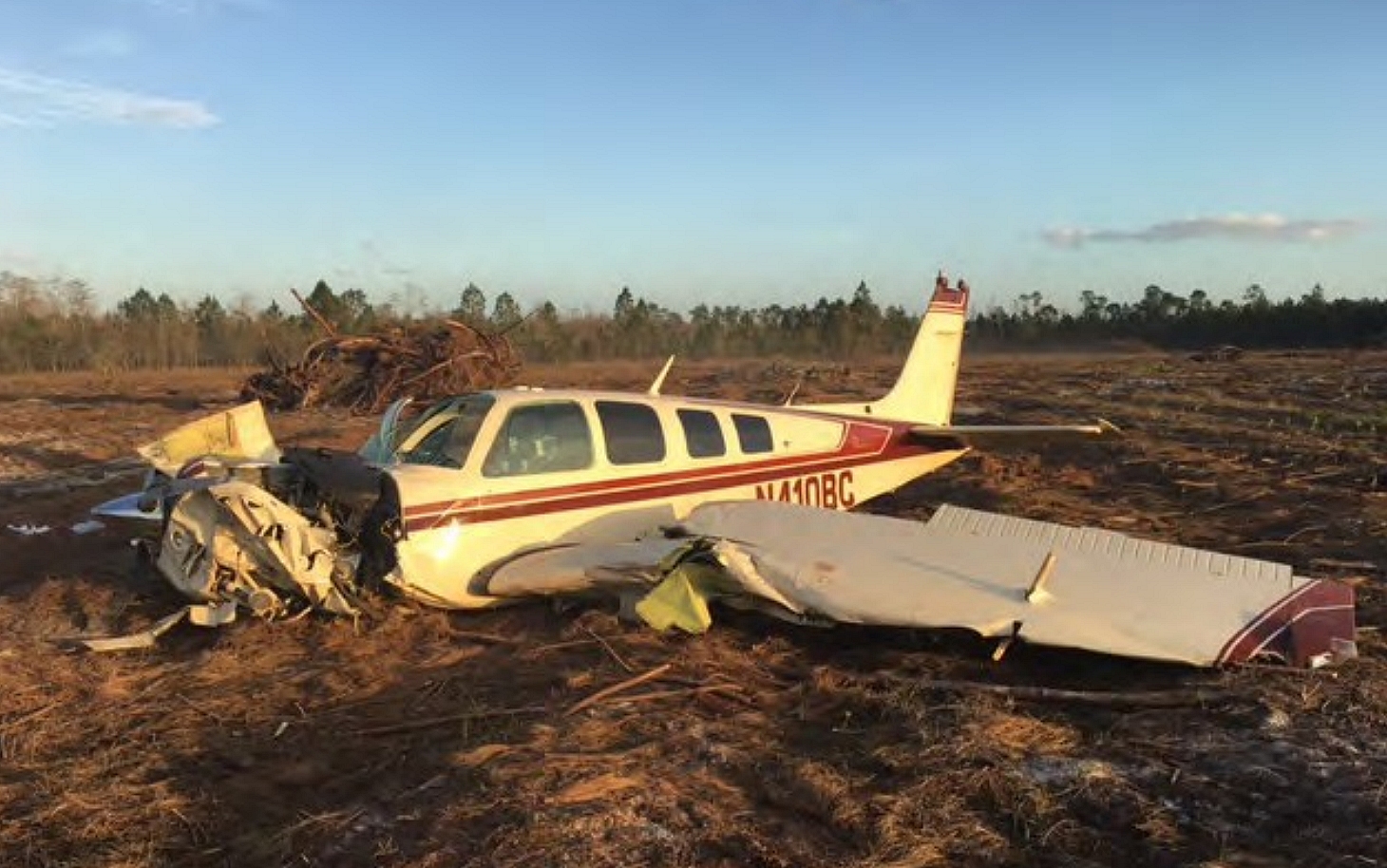
ASN Wikibase Occurrence # 192042
This information is added by users of ASN. Neither ASN nor the Flight Safety Foundation are responsible for the completeness or correctness of this information.
If you feel this information is incomplete or incorrect, you can submit corrected information.
| Date: | Saturday 17 December 2016 |
| Time: | 16:07 |
| Type: |  Beechcraft A36 Bonanza |
| Owner/operator: | Private |
| Registration: | N410BC |
| MSN: | E-1606 |
| Year of manufacture: | 1979 |
| Engine model: | Continental IO-520 Series |
| Fatalities: | Fatalities: 0 / Occupants: 1 |
| Aircraft damage: | Substantial |
| Category: | Accident |
| Location: | West of Rodeo Acres Drive, Flagler County, FL -
 United States of America United States of America
|
| Phase: | Manoeuvring (airshow, firefighting, ag.ops.) |
| Nature: | Private |
| Departure airport: | Deland, FL (KDED) |
| Eustis, FL (X55) | |
| Investigating agency: | NTSB |
| Confidence Rating: |
The private pilot reported that he was returning to his home airport and was practicing maneuvers at 1,200 ft. The left fuel tank ran dry, and the engine experienced a total loss of power. He stated that his normal procedure was to exhaust the fuel in one tank before switching to the other tank. He attempted to restart the engine after switching to the right tank, which, he stated, held 40 gallons of fuel. The engine would not restart, so he conducted a forced landing in a field. After touchdown, the landing gear collapsed, and the airplane nosed down into the ground.
Examination of the fuel system revealed that the left wing was substantially damaged and that the left wing fuel tank was breached. The right wing had minimal damage, and the right wing fuel tank was undamaged. No fuel was found in either fuel tank, and the wing tank selector handle was found in the “off” position. Examination of the engine and airframe did not reveal any evidence of preimpact mechanical malfunctions or failures that would have precluded normal operation.
Blood was drawn from the pilot about 1 hour after the accident, and it tested positive for 0.177 gm/dl of alcohol. At the time of the accident, the pilot’s alcohol level was likely at or above 0.185 gm/dl, which is considered impairing. The pilot’s impairment by alcohol before and during the flight likely led to his improper fuel mismanagement and the subsequent loss of engine power.
Probable Cause: The pilot's impairment by alcohol before and during the flight, which led to his improper fuel management and resulted in fuel exhaustion and a subsequent loss of engine power.
Accident investigation:
 |
|
Sources:
NTSB
FAA register: http://registry.faa.gov/aircraftinquiry/NNum_Results.aspx?NNumbertxt=410BC
Location
Images:

Photo: FAA
Revision history:
| Date/time | Contributor | Updates |
|---|---|---|
| 18-Dec-2016 01:00 | Geno | Added |
| 18-Dec-2016 01:21 | Geno | Updated [Registration, Cn, Operator, Source, Narrative] |
| 18-Dec-2016 13:09 | Anon. | Updated [Damage] |
| 10-Apr-2019 12:36 | ASN Update Bot | Updated [Time, Aircraft type, Nature, Departure airport, Destination airport, Source, Damage, Narrative, Accident report, ] |
| 10-Apr-2019 13:17 | harro | Updated [Departure airport, Source, Narrative, Photo] |
Corrections or additions? ... Edit this accident description
The Aviation Safety Network is an exclusive service provided by:


 ©2024 Flight Safety Foundation
©2024 Flight Safety Foundation